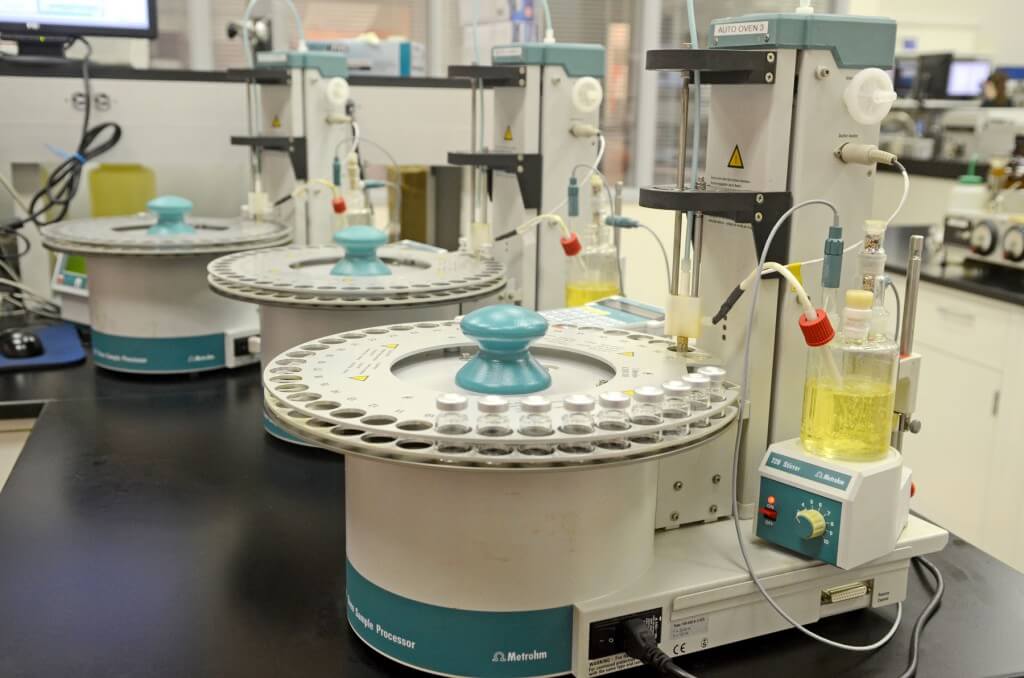Karl Fischer Water
Water contamination is detrimental to any lubricant. If a crackle test is positive, further testing is needed to quantify the amount of water by using The Karl Fischer Water titration by ASTM D6304. A measured amount of oil is introduced into a titration chamber. This solution is titrated with Karl Fischer reagent to a specific endpoint. The amount of reagent used and the sample volume are calculated and converted to ppm or percent by mass.
Low levels of water (0.5%) are typically the result of condensation. Higher levels can indicate a source of water ingress. Water can enter a system through seals, breathers, hatches and fill caps. Internal leaks from heat exchangers and water jackets are other potential sources.
When free water (non-emulsified) is present in oil, it poses a serious threat to the equipment. Water is a very poor lubricant and promotes rust and corrosion to the components. Dissolved water in oil (emulsified) will promote oil oxidation and reduce the load handling ability of the oil. Water in any form will cause accelerated wear, increased friction, and high operating temperatures. If left unchecked, water will lead to premature machine failure. In most systems, water should not exceed 500 ppm.
Operating Principle
Samples are placed in sealed vials which are placed in a temperature controlled oven. The vial is pierced with a needle through which the water vapor travels to a titration vessel. Only water is evaporated while the oil sample remains in the vial to eliminate interferences and contamination. Water content is determined via a reaction with iodine. The titration endpoint is reached when the instrument detects unreacted iodine. Results are reported as either percent water or parts-per-million (ppm). These units are easily converted by recognizing that 1% = 10,000 ppm. Other methods
of detecting water may be more appropriate. ASTM method - D6304-C
Significance
Water seriously damages the lubricating properties of oil and promotes component corrosion. Increased water concentrations indicate possible condensation, coolant leaks, or process leaks around the seals.
Applications
Accurate to .001%. Quantifies both emulsified and free water.


